A Comprehensive Guide to 36 Melocactus Varieties: Care Tips Included
Step into the captivating world of Melocactus, commonly referred to as the melon cactus or Turk’s cap cactus. What sets this fascinating plant apart is its distinctive red circular ring resting proudly atop its body. With a staggering array of over 40 unique species, Melocactus is a true marvel of nature. The best part? These enchanting cacti are surprisingly low-maintenance, making them an ideal choice for both seasoned plant enthusiasts and newcomers alike. Let’s delve deeper into the wonderful realm of Melocactus as we uncover the secrets to their effortless care and maintenance. Prepare to be amazed!
Contents
- 1 Types of Melocactus
- 1.1 Melocactus andinus
- 1.2 Melocactus andinus hernandezii
- 1.3 Melocactus azureus
- 1.4 Melocactus bahiensis
- 1.5 Melocactus bellavistensis
- 1.6 Melocactus broadwayi
- 1.7 Melocactus caroli-linnaei
- 1.8 Melocactus conoideus
- 1.9 Melocactus curvispinus
- 1.10 Melocactus curvispinus caesius
- 1.11 Melocactus curvispinus dawsonii
- 1.12 Melocactus curvispinus koolwijkianus
- 1.13 Melocactus curvispinus loboguerreroi
- 1.14 Melocactus deinacanthus
- 1.15 Melocactus ernestii
- 2 How to Find Melocactus
- 3 Caring for Melocactus
- 4 How to Propagate Melocactus
Types of Melocactus
Melocactus andinus
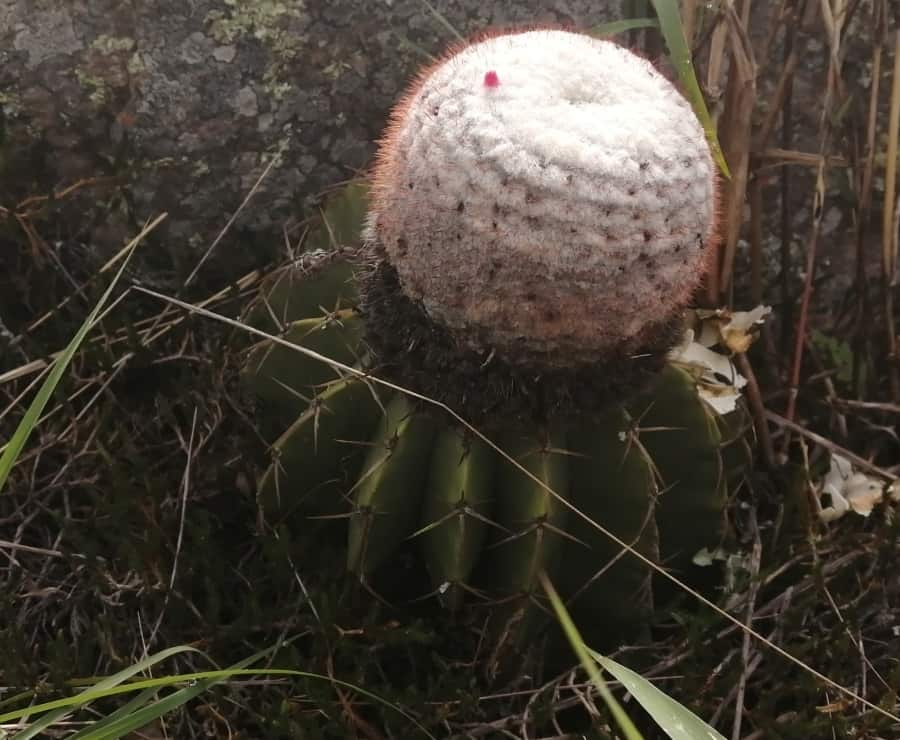
This unique Melocactus species boasts a circular red ring atop its body, giving it a distinctive appearance.
Melocactus andinus hernandezii
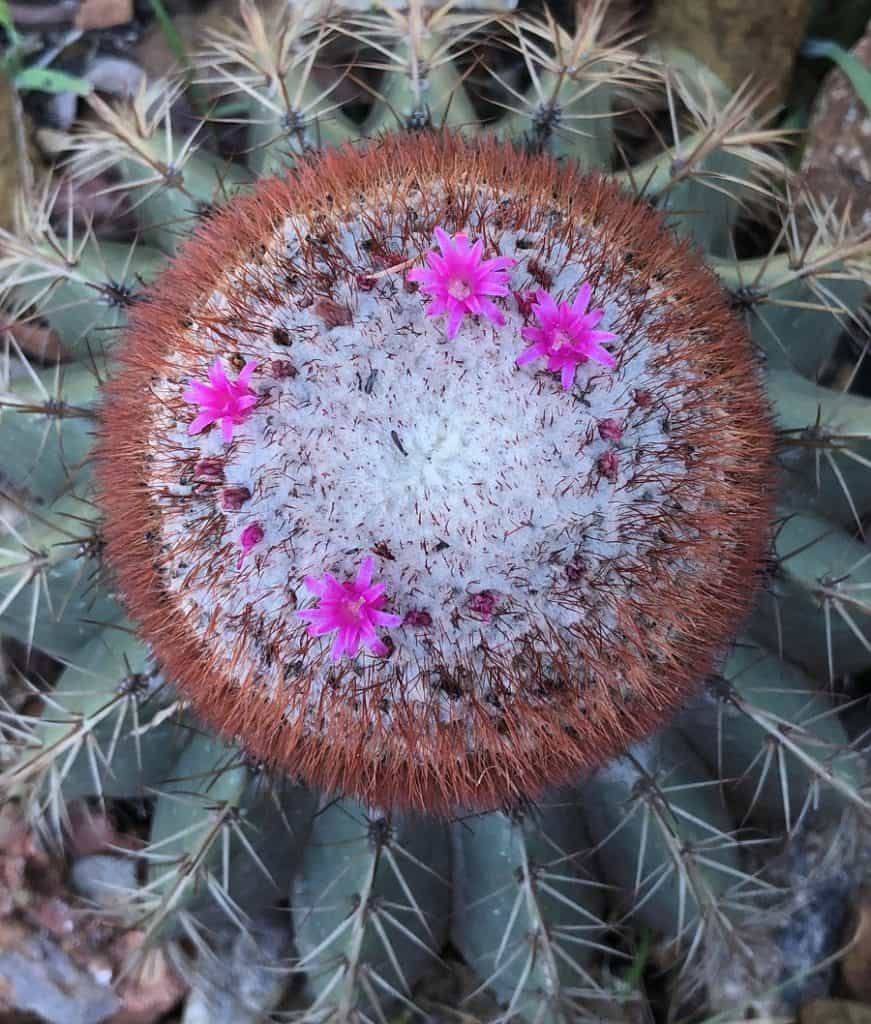
Melocactus azureus
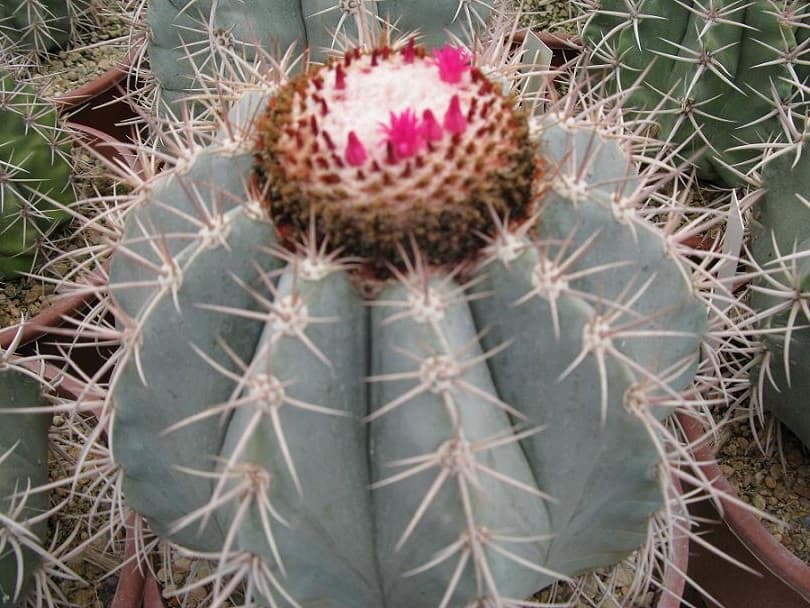
Renowned for its frosty blue outer surface, this Brazilian Melocactus is highly sought after. It may require a bit more care compared to other varieties.
Melocactus bahiensis
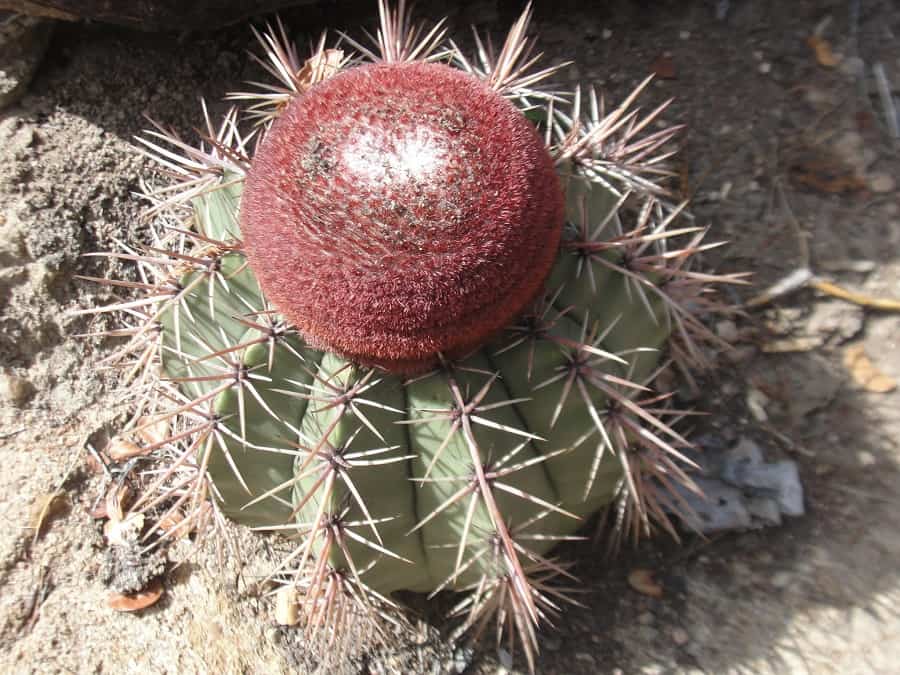
This rare species of Melocactus features a cephalium covered in red bristles. It exhibits uniform vegetative characteristics, while its spines can vary in thickness.
Melocactus bellavistensis
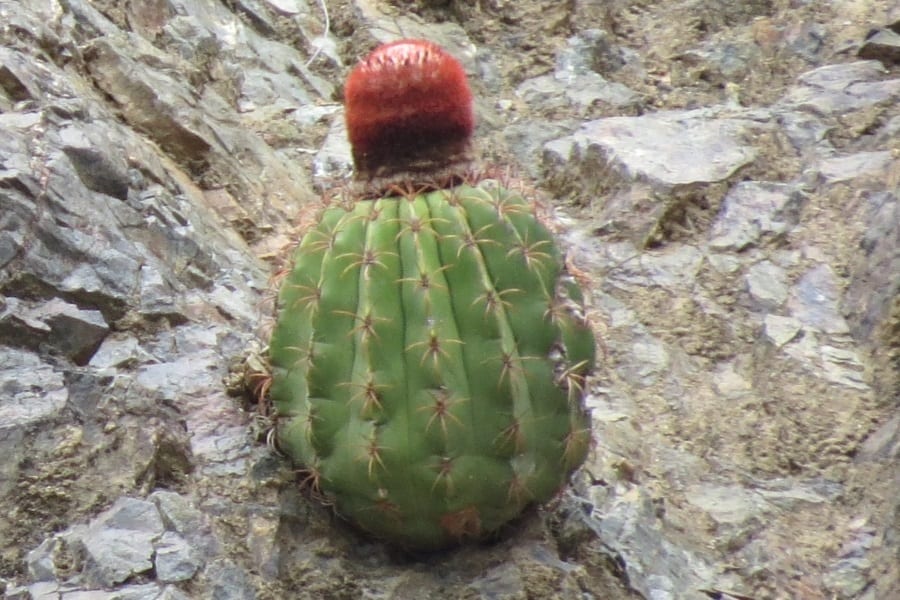
A rare species of Melocactus, Melocactus bellavistensis stands out with its red bristly cephalium. Unlike most other melocacti, this species has a uniform appearance in terms of its vegetative characteristics, while its spines vary in thickness.
Melocactus broadwayi
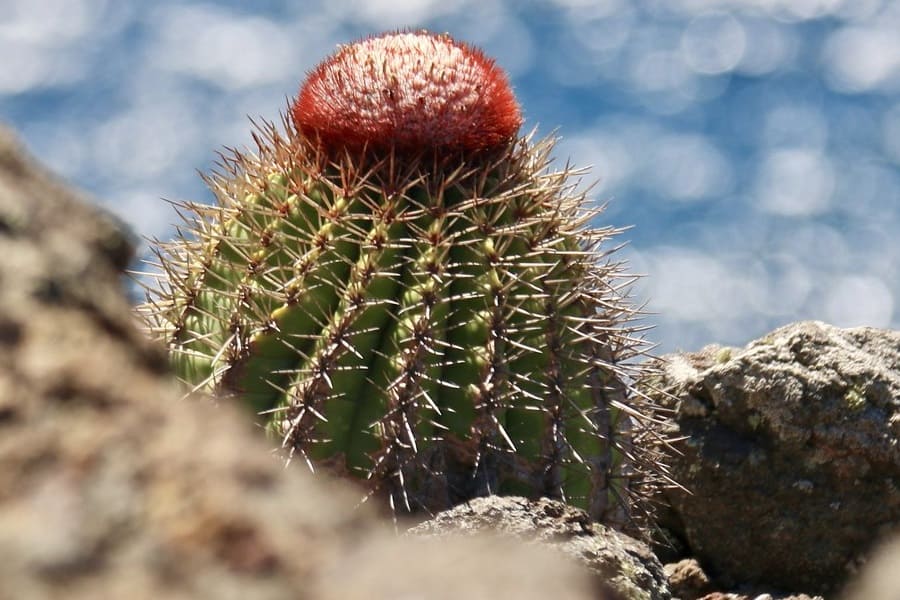
Initially resembling a small barrel cactus, this Melocactus species matures into a striking plant with a recognizable cephalium. Its appearance doesn’t hint at its belonging to the Melocactus genus.
Melocactus caroli-linnaei
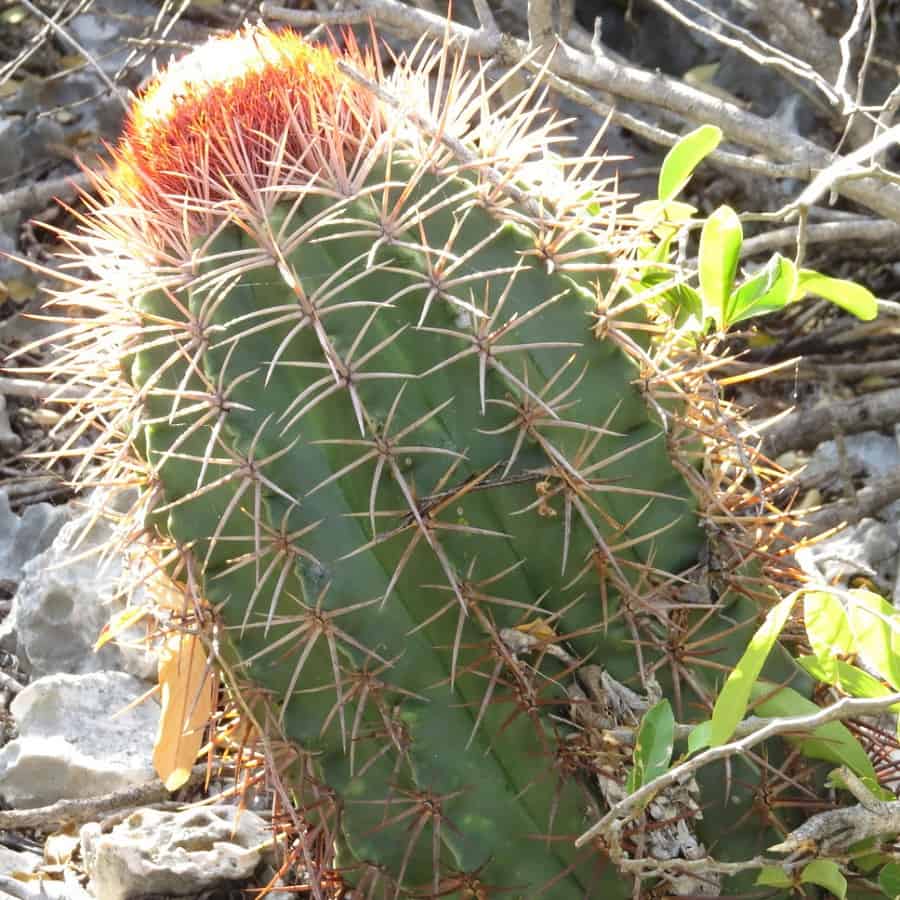
Melocactus conoideus
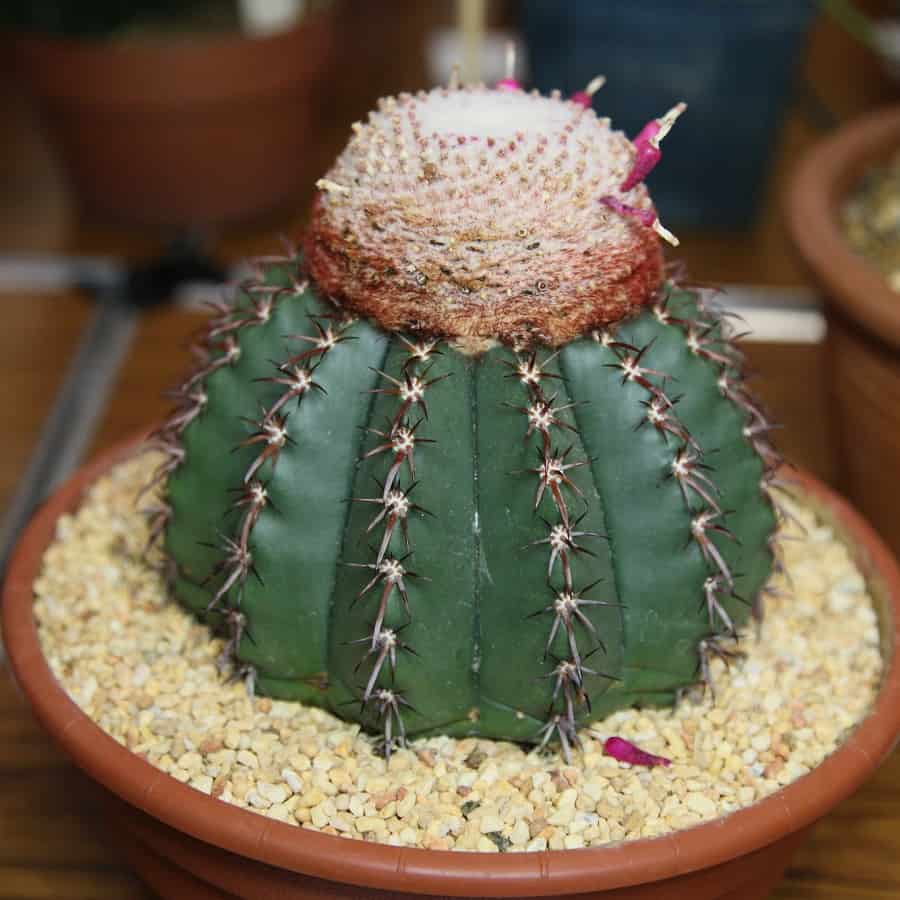
This Melocactus species is small in size and has short spines.
Melocactus curvispinus
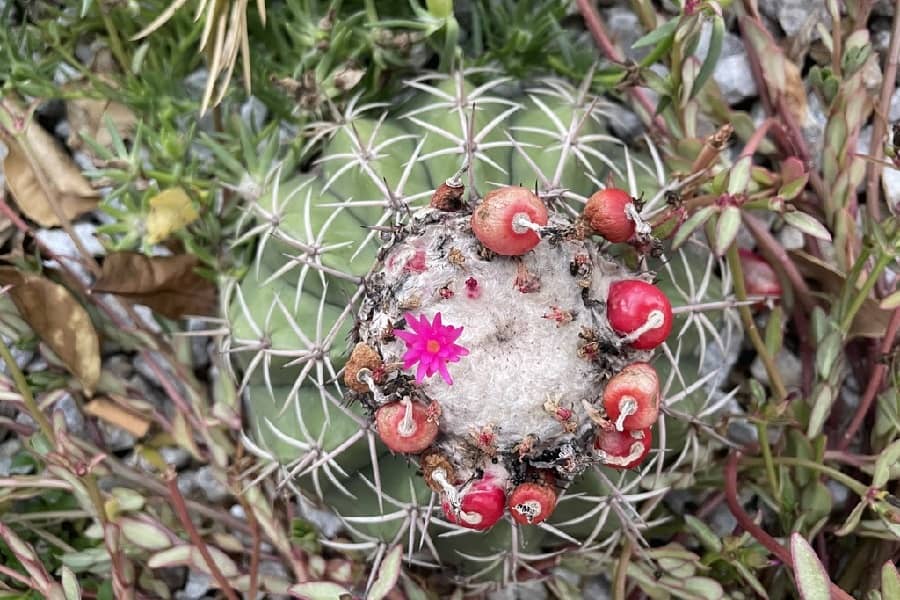
Melocactus curvispinus caesius
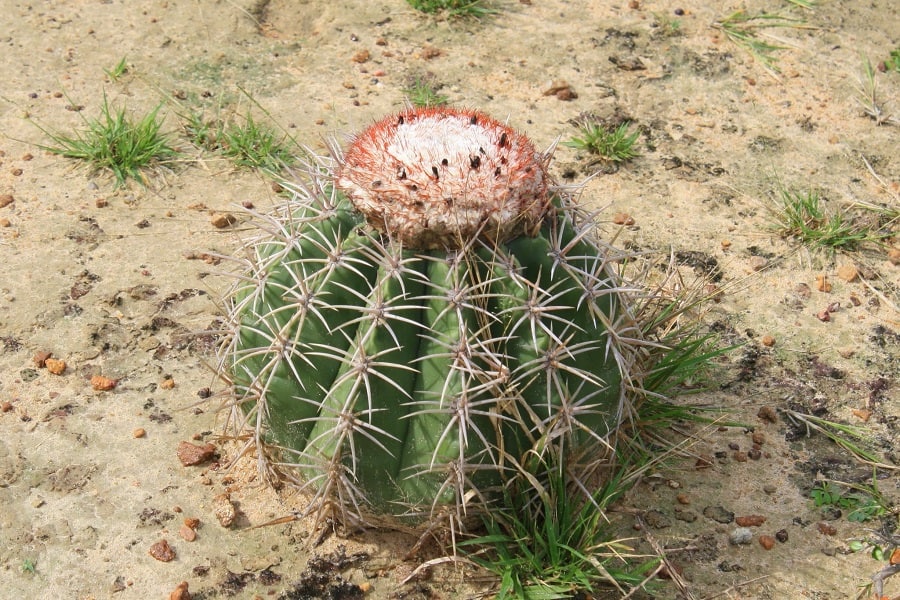
Often growing alone, the Melocactus caesius is considered a subspecies of Melocactus curvispinus. These plants vary significantly, particularly in the number of ribs.
Melocactus curvispinus dawsonii
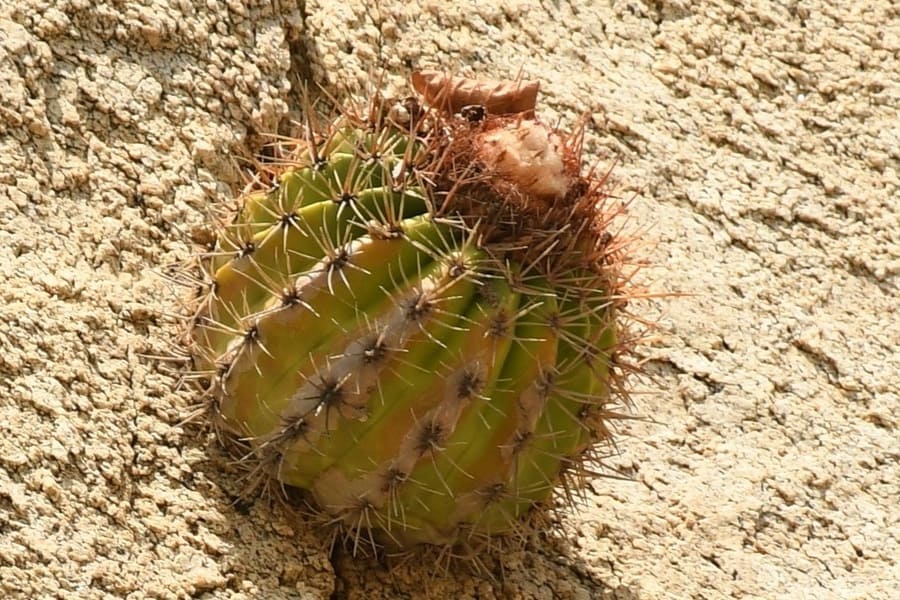
Melocactus curvispinus koolwijkianus
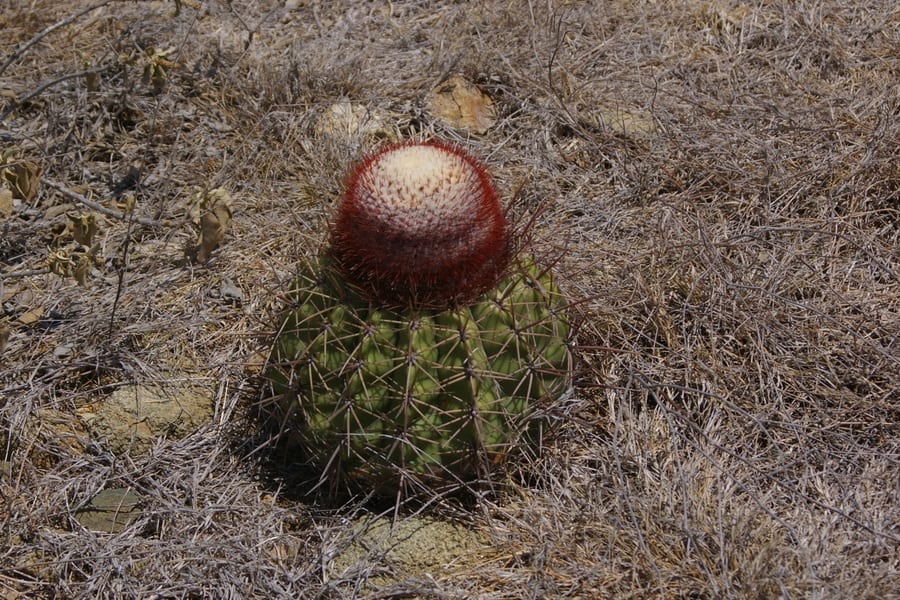
Melocactus curvispinus loboguerreroi
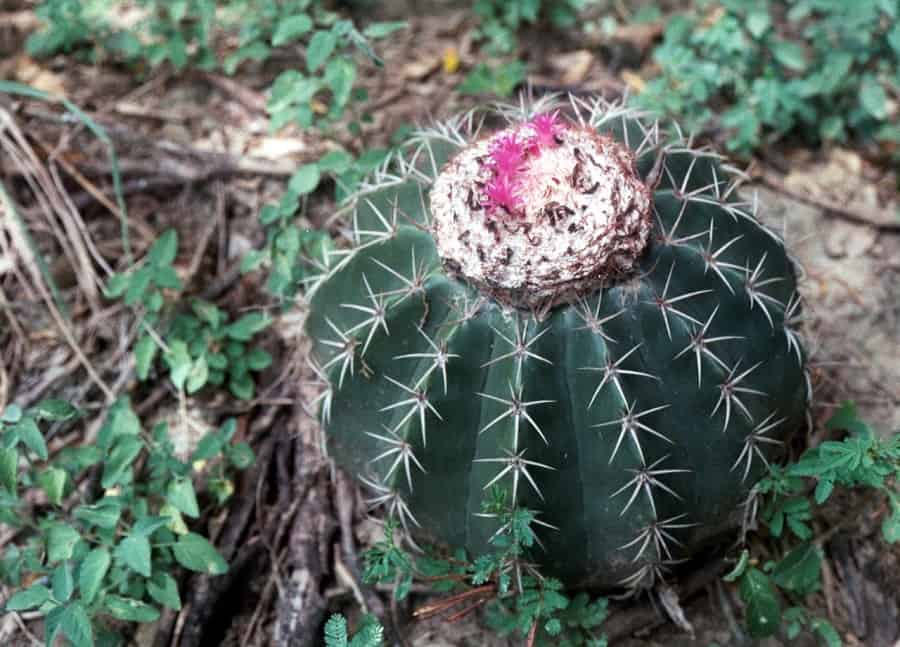
The Melocactus loboguerreroi closely resembles the typical Melocactus curvispinus found in Mexico and Central America. It can be identified by the spacing between areoles, size of radial spines, and smaller spherical-ovoidal seeds.
Melocactus deinacanthus
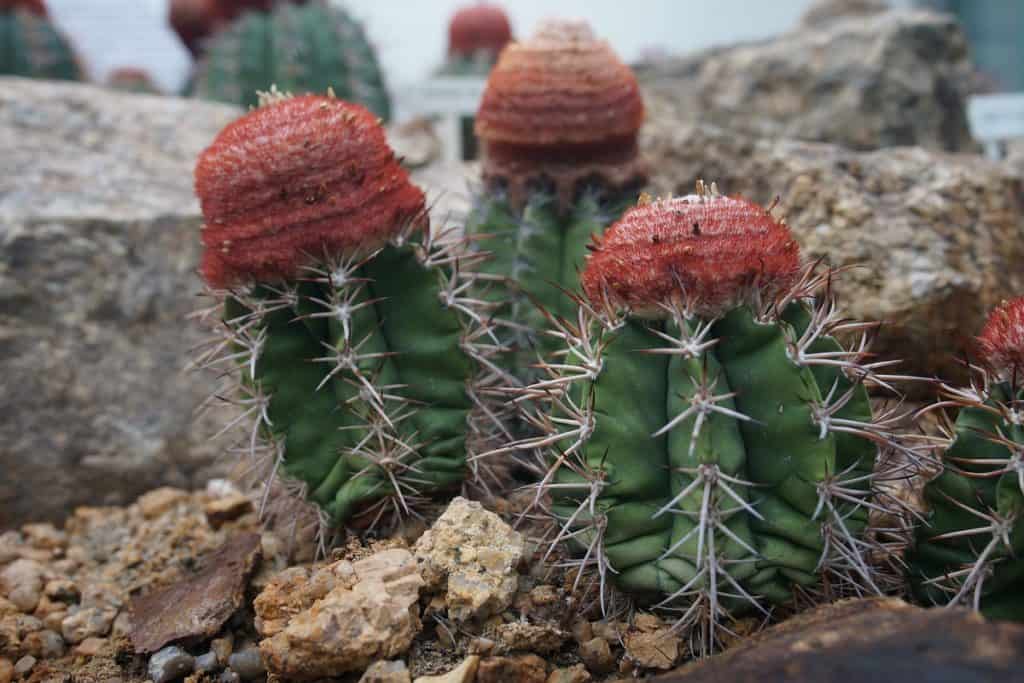
Native to Brazil, the Wonderfully Bristled Turk’s-Cap Cactus grows in rocky and coarse environments. These cacti are rare due to their endangered habitat. They exhibit around 10 ridges, each adorned with multiple spines. In late summer, their flowers bloom, showcasing various shades of pink.
Melocactus ernestii
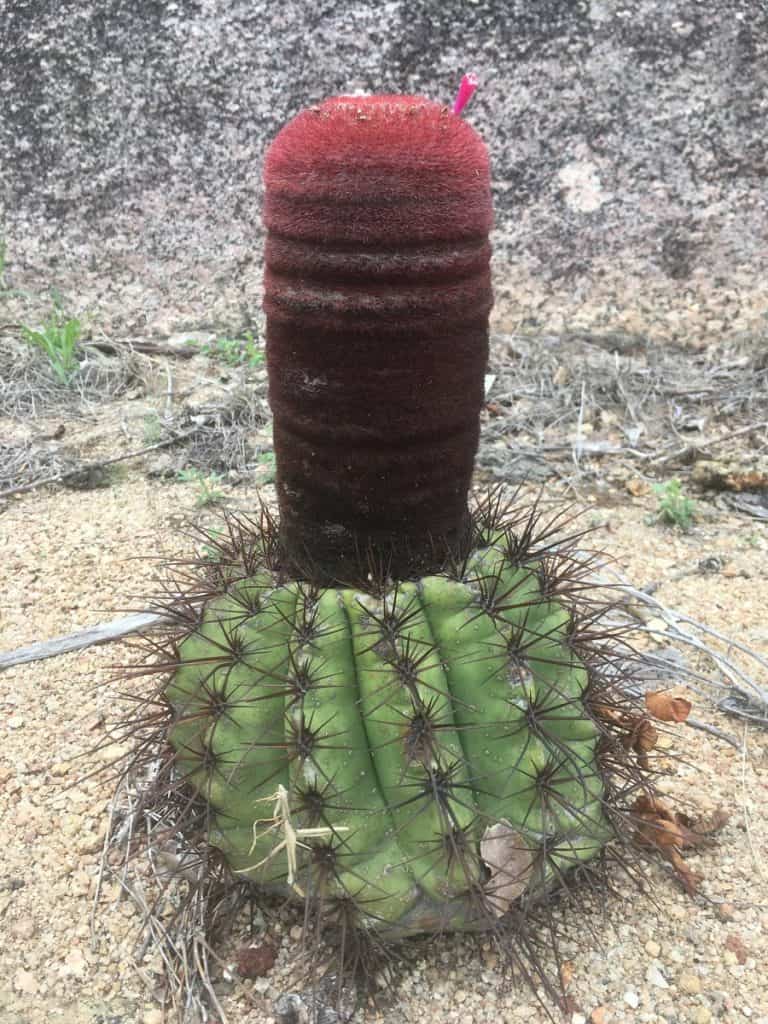
One of the larger Melocactus species, Melocactus ernestii is characterized by its long spines. These plants are highly variable in size, color, and spine form. The mature plants feature a cephalium covered in wool and bristles, while immature plants resemble small barrel cacti.
Melocactus glaucescens
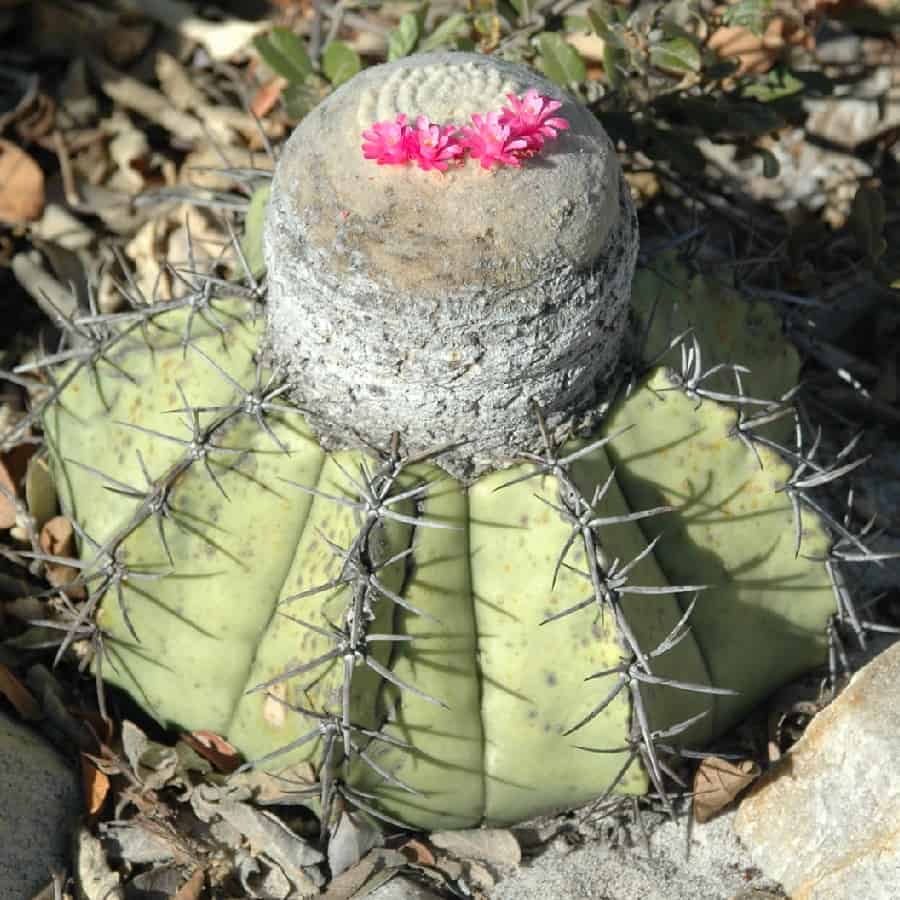
This small species of Melocactus displays attractive bluish stems crowned with tall creamy-white cephalia.
Melocactus harlowii
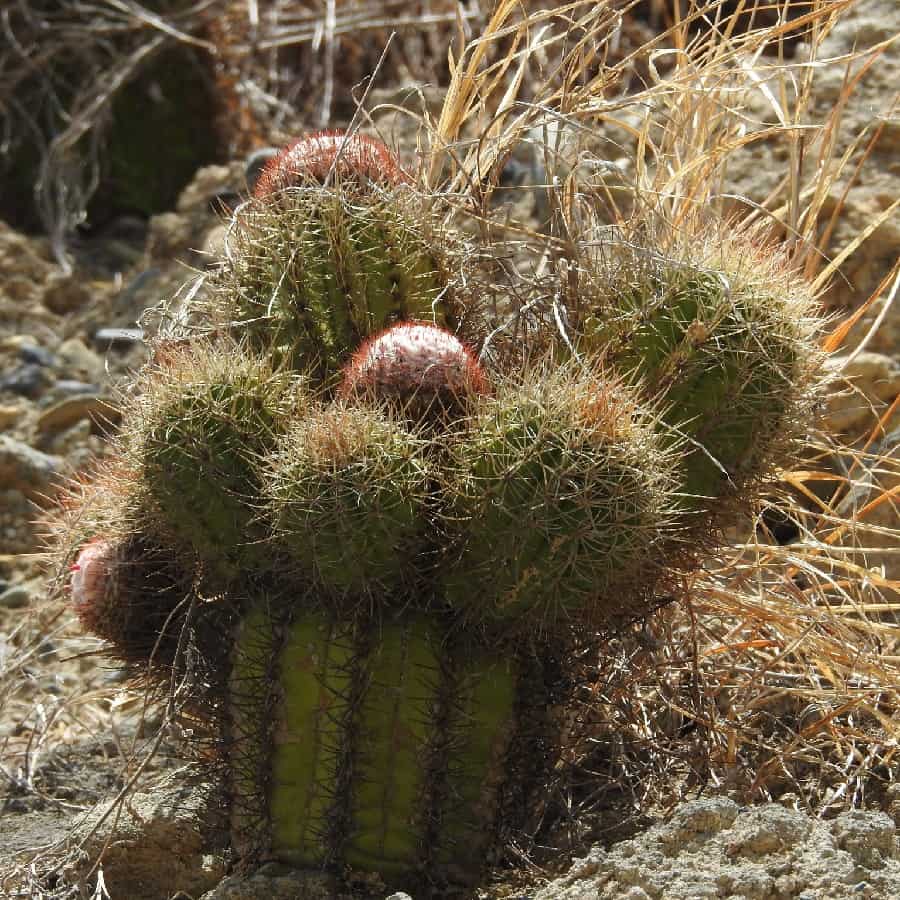
Melocactus harlowii is a Cuban species with bright green, ovate to cylindrical usually solitary stems that reach a height of about 10 inches and a diameter of 4-8 inches.
Melocactus intortus
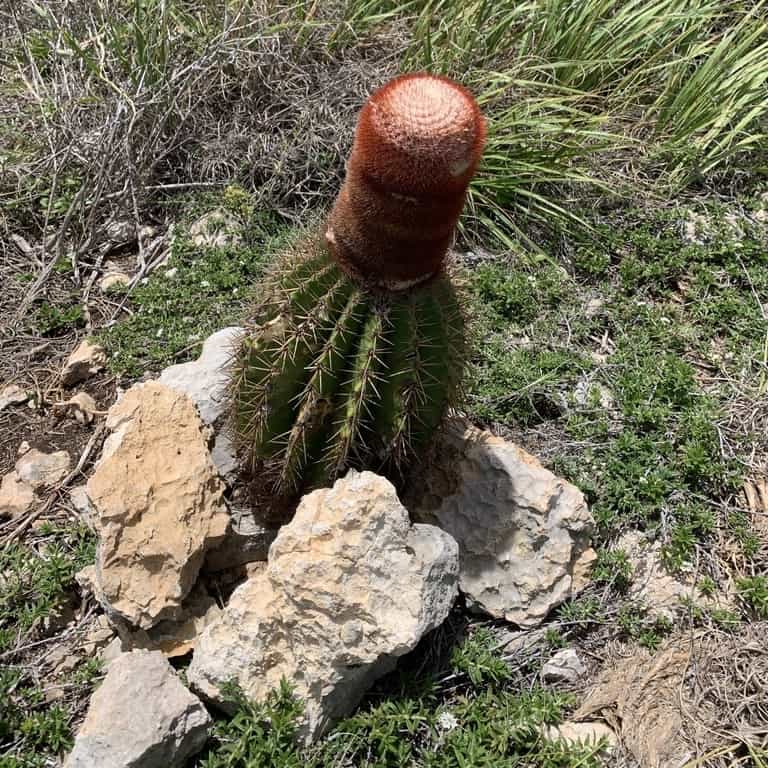
Melocactus intortus intortus
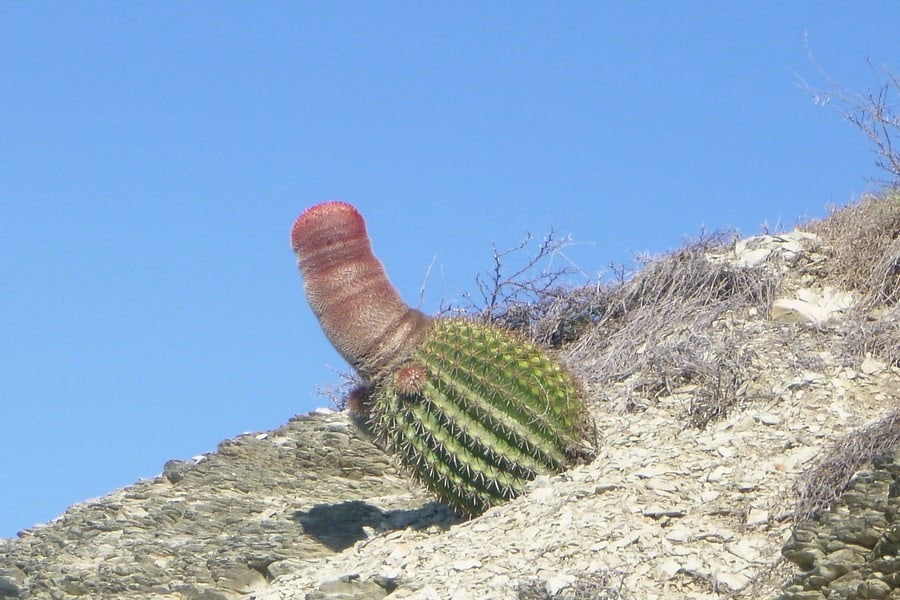
Melocactus intortus domingensis
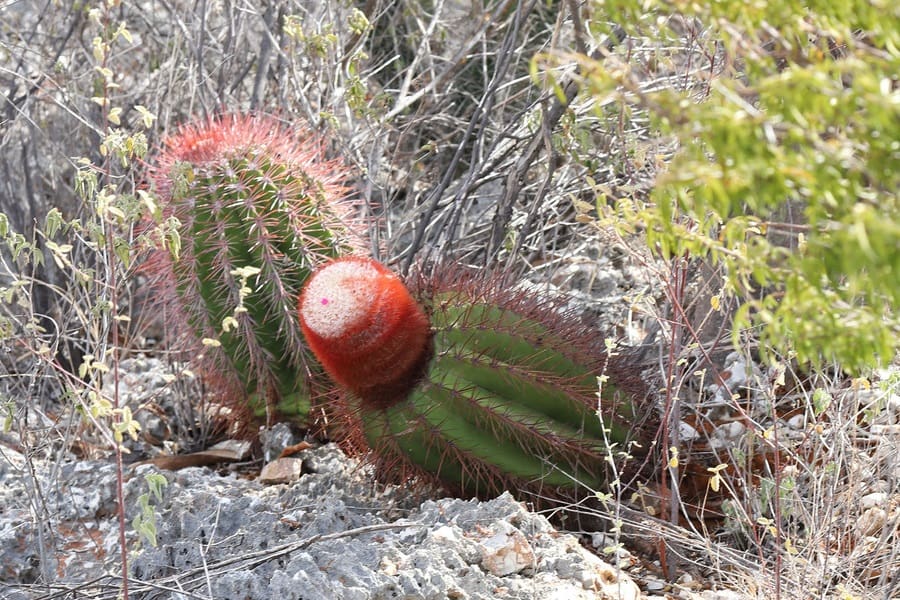
Melocactus lemairei
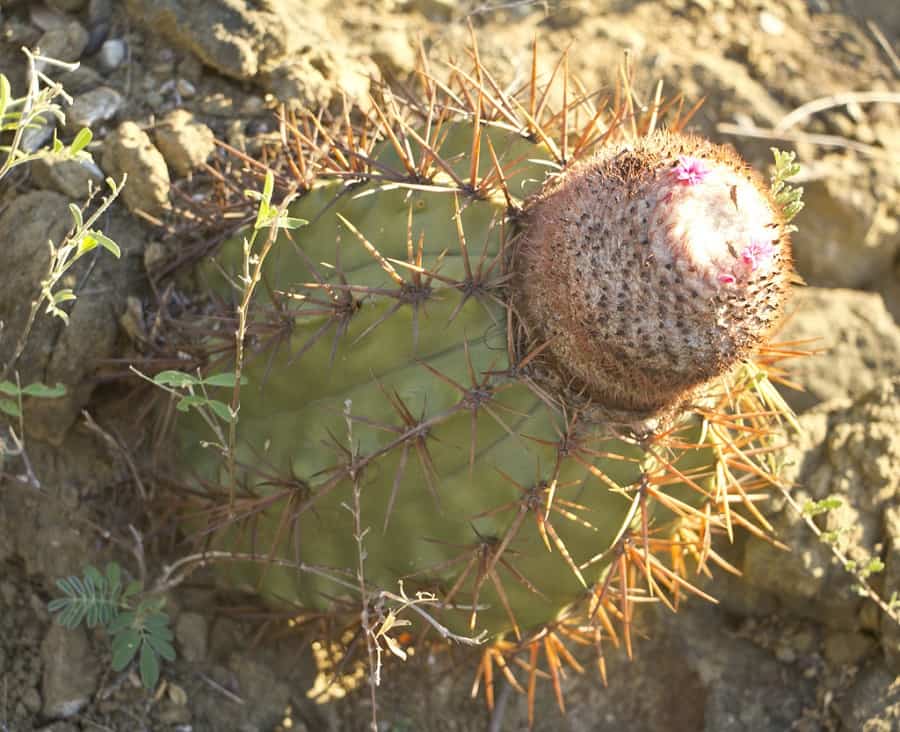
Melocactus macracanthos
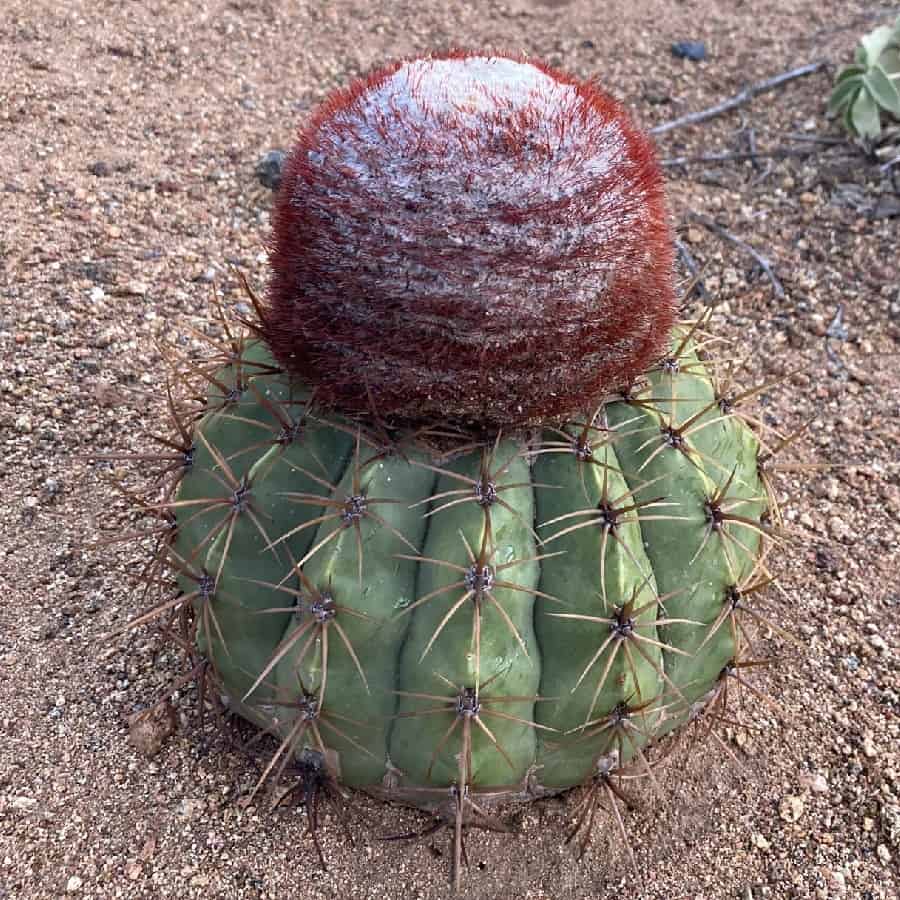
Melocactus matanzanus
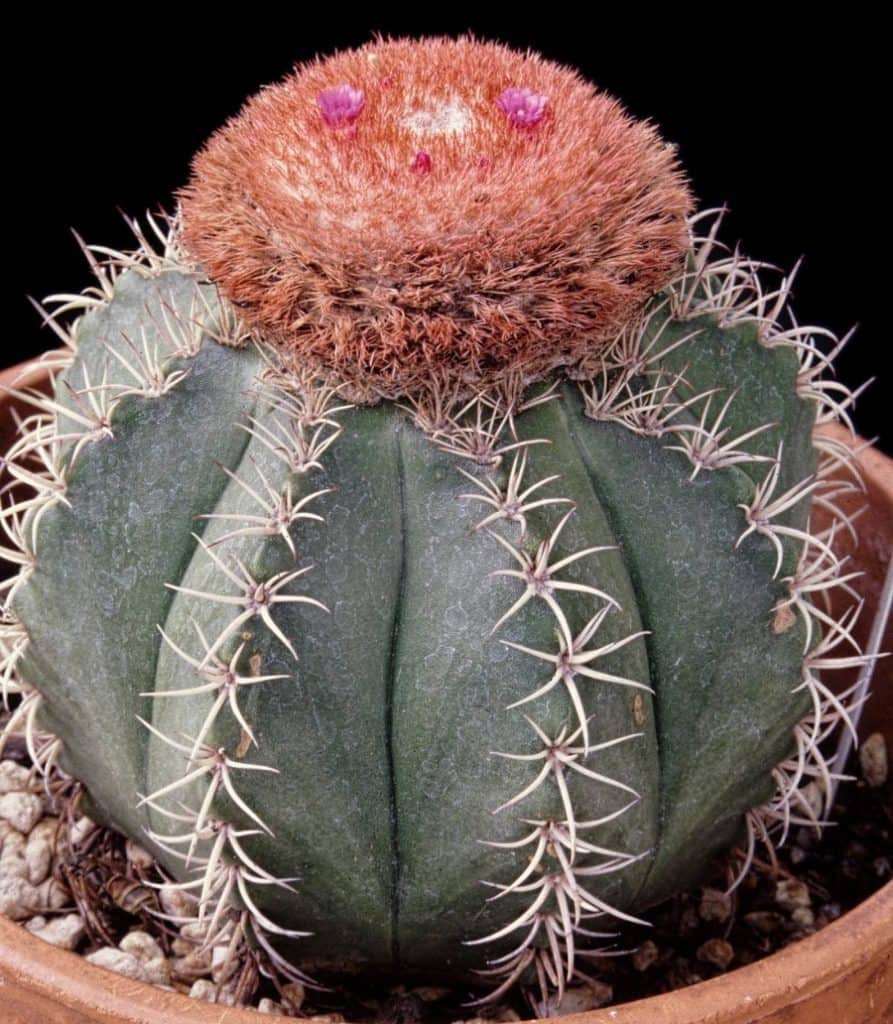
This species of Melocactus is one of the smallest and most commonly grown. It develops a cephalium and blooms at a relatively young age, making it highly desirable.
Melocactus mazelianus
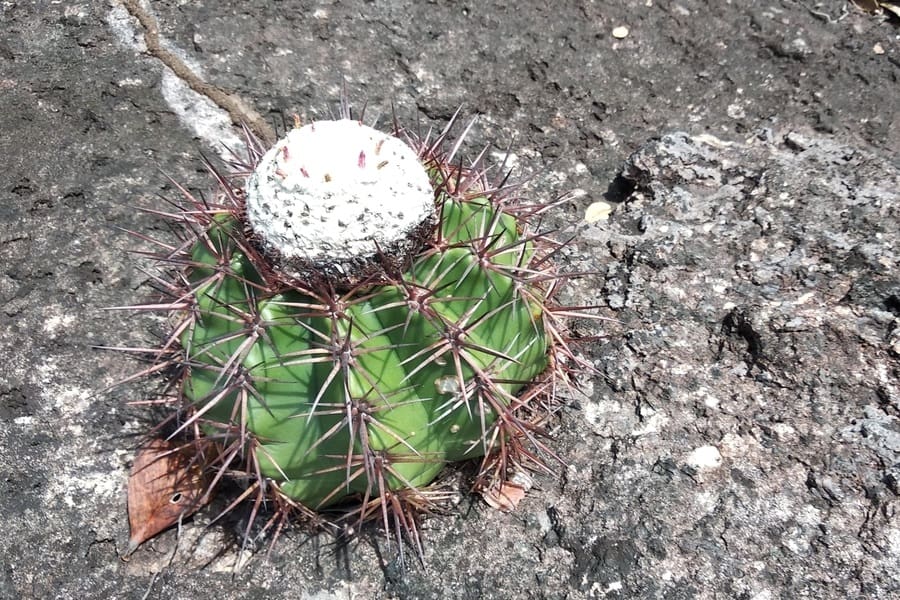
Melocactus neryi
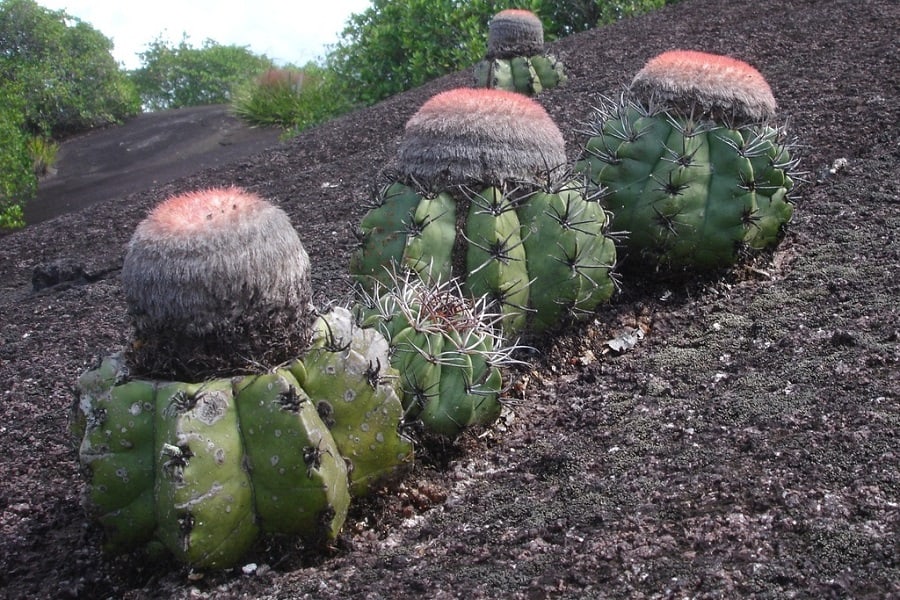
Melocactus oreas cremnophilus
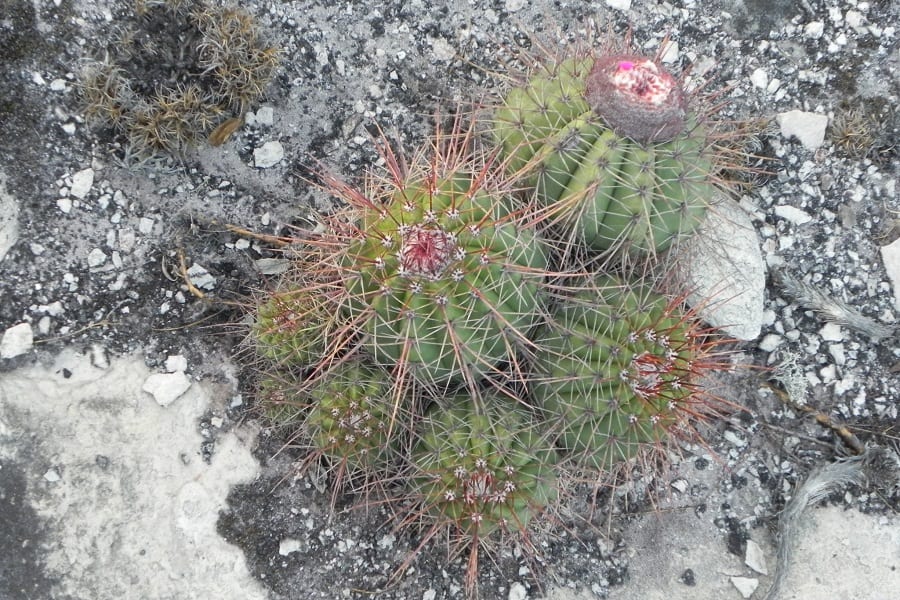
Melocactus oreas cremnophilus is a strongly spined solitary cactus easily recognizable by its cephalium. This plant has smaller depressed globose stems, mostly less than 5 inches tall.
Melocactus pachyacanthus
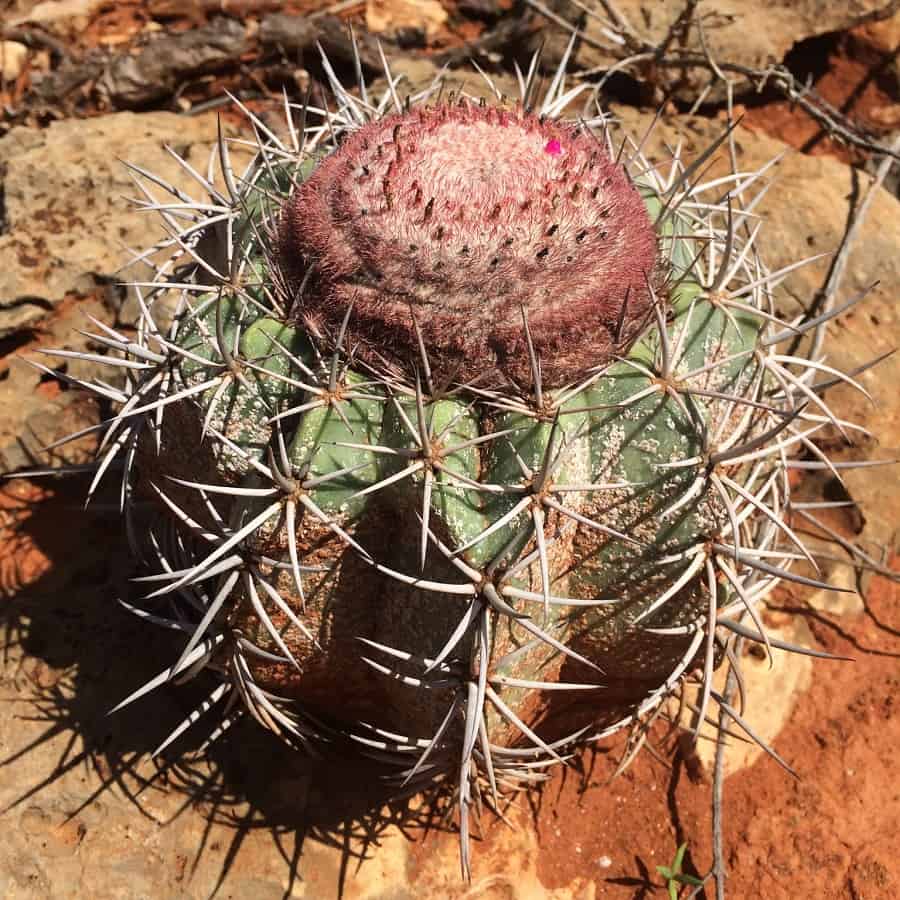
Melocactus pachyacanthus is recognizable by its greyish-green to bluish-green body with stout brownish-red spines. This plant has a reputation for being more difficult to cultivate than most. It features globose to elongate stems that are often strongly glaucous, especially when young.
Melocactus peruvianus
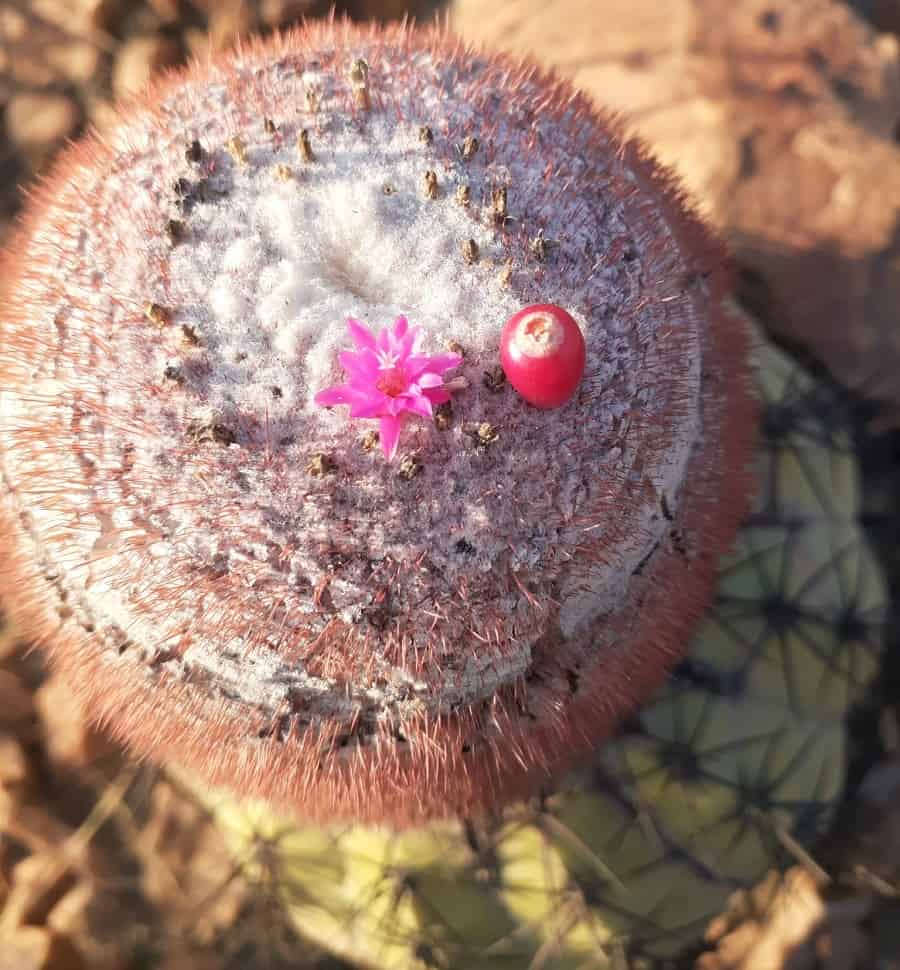
Melocactus peruvianus is an extremely variable solitary globose cactus. Its size can vary, but it typically reaches a height of about 8 inches with a diameter of 4-8 inches.
Melocactus salvadorensis
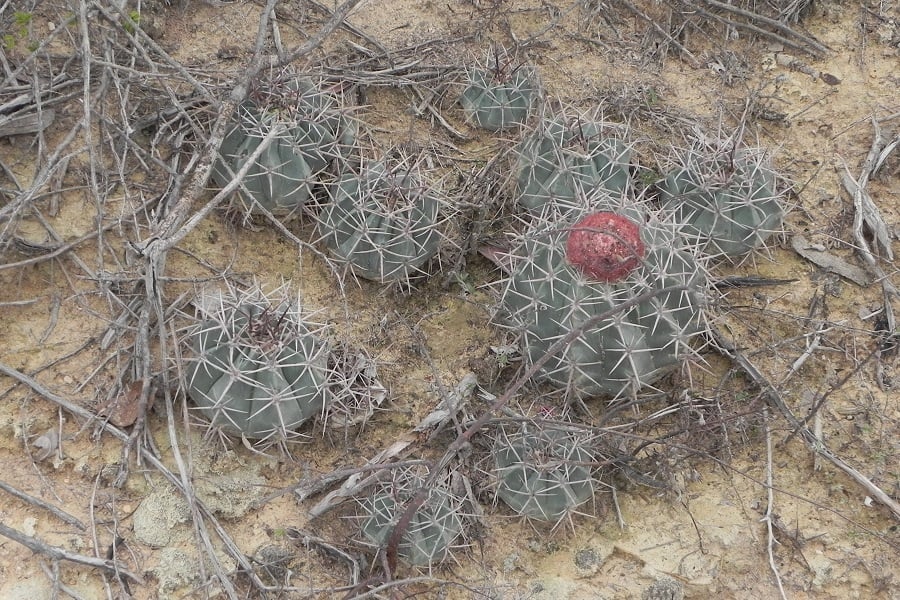
Similar to Melocactus ernestii, Melocactus salvadorensis features a bluish-green body and reddish-brown spines. However, the ribs of this species are more triangular-acute, and the spines are shorter.
Melocactus schatzlii
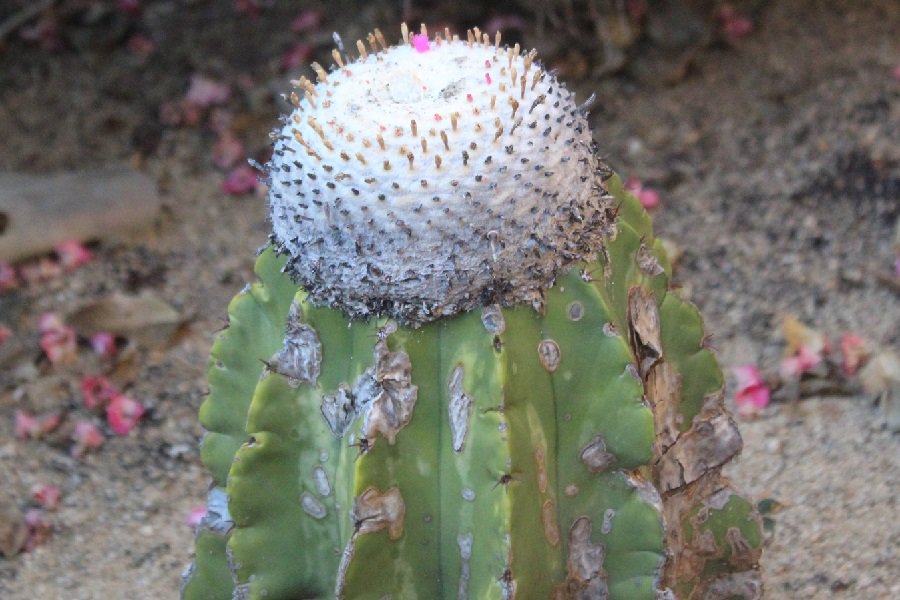
Melocactus schatzlii is one of the few Andean Melocacti, characterized by a peculiar white cephalium with short bristles almost completely concealed in the wool. In time, the cephalium forms a 5-inch column that towers over the body. The fruit is bright pink.
Melocactus smithii
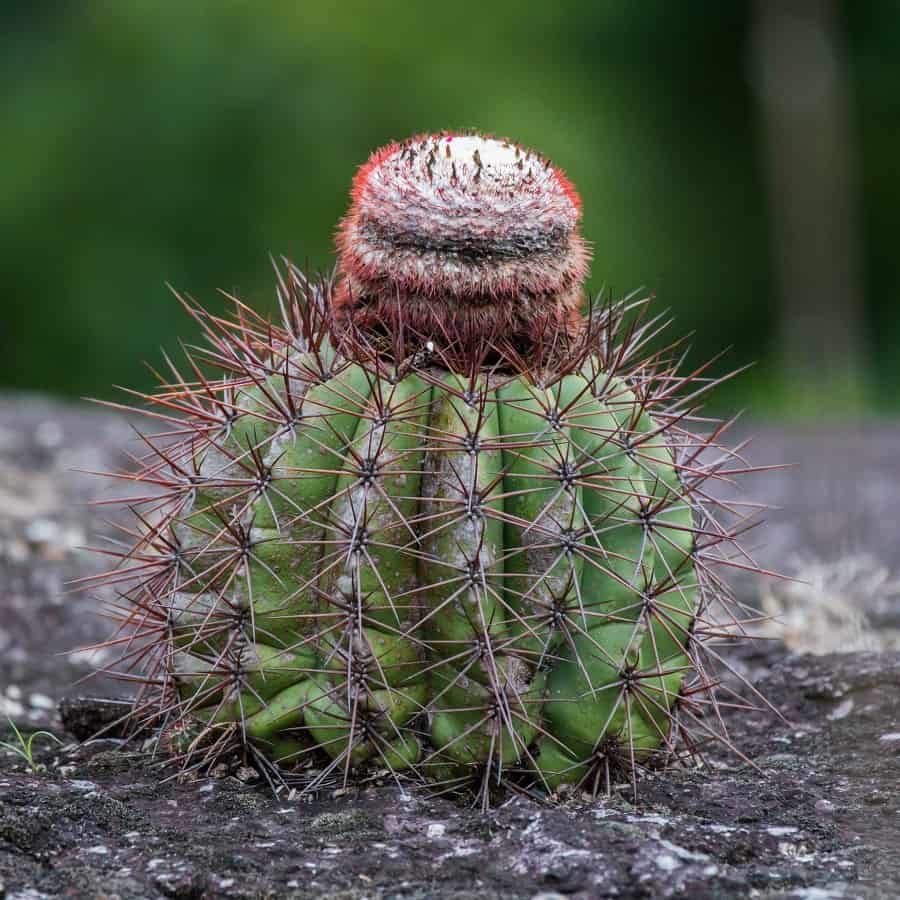
Melocactus stramineus
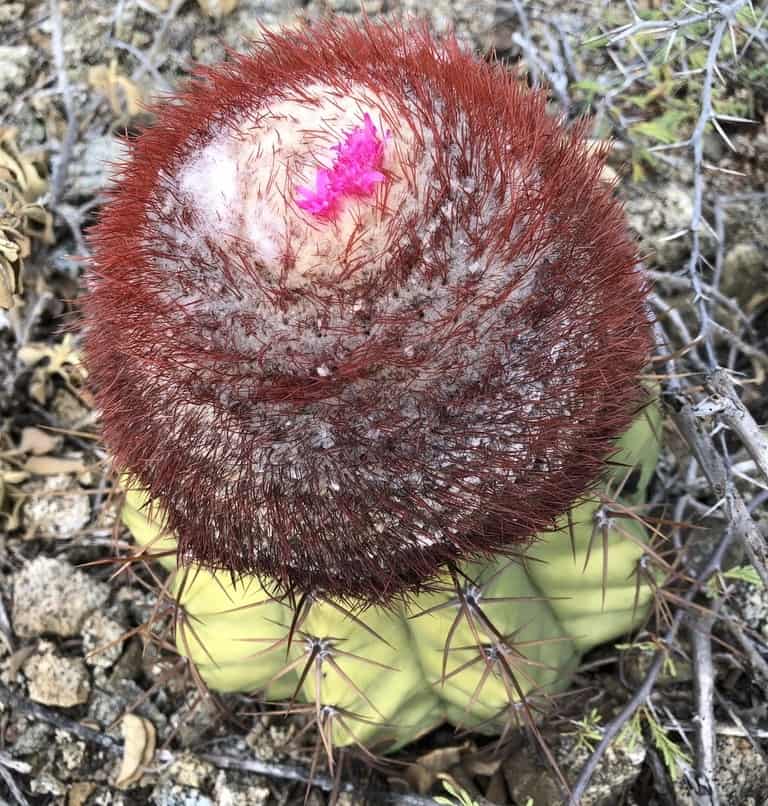
Melocactus violaceus
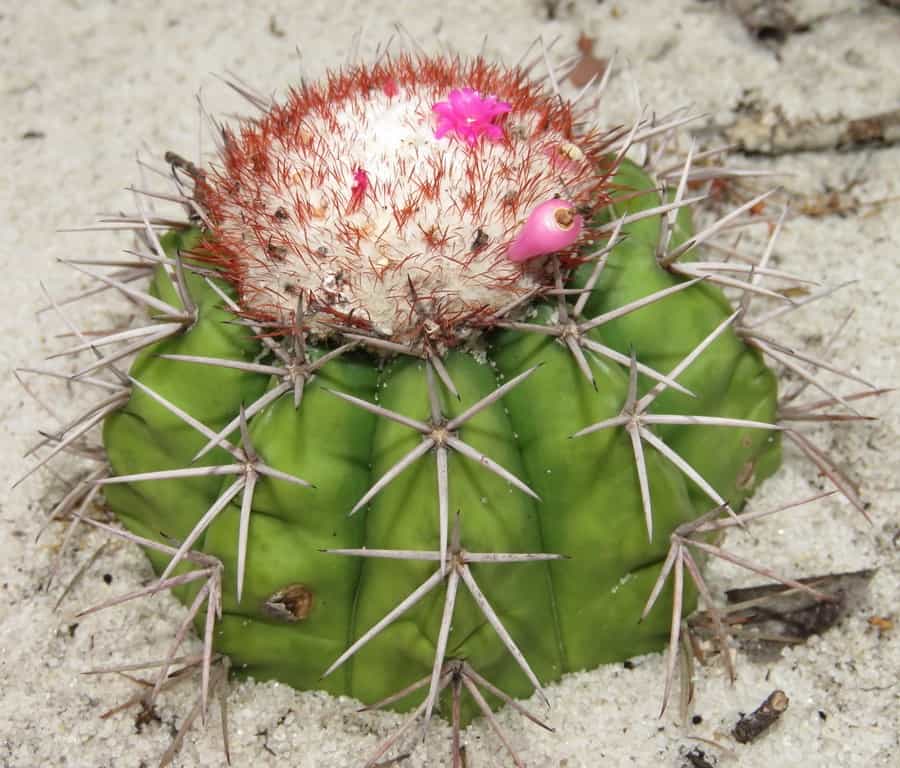
Melocactus violaceus margaritaceus
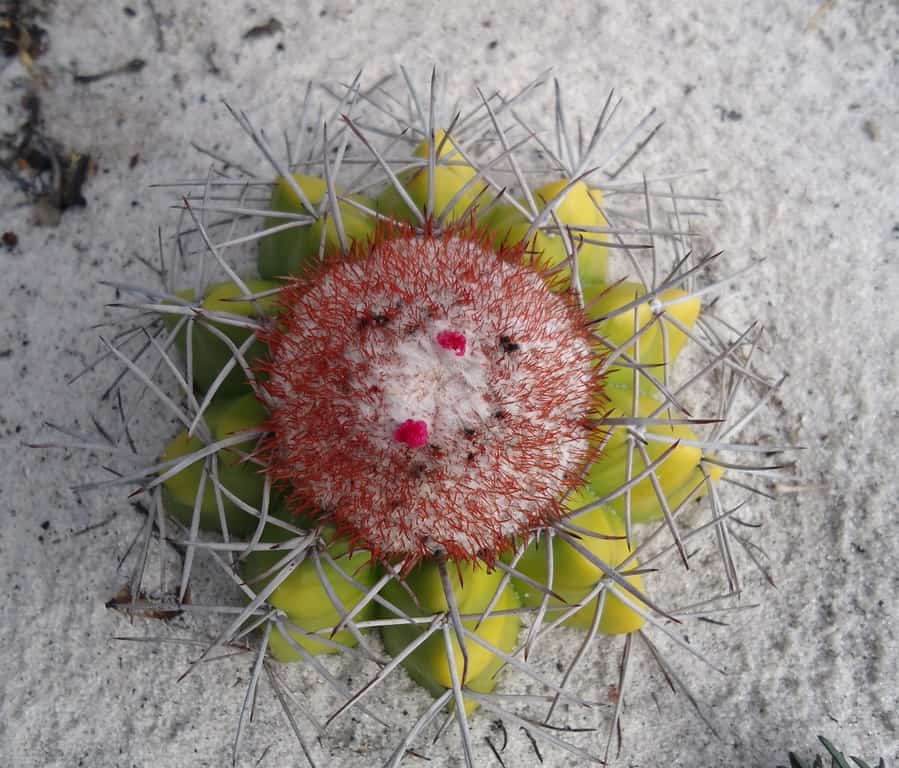
Melocactus zehntneri
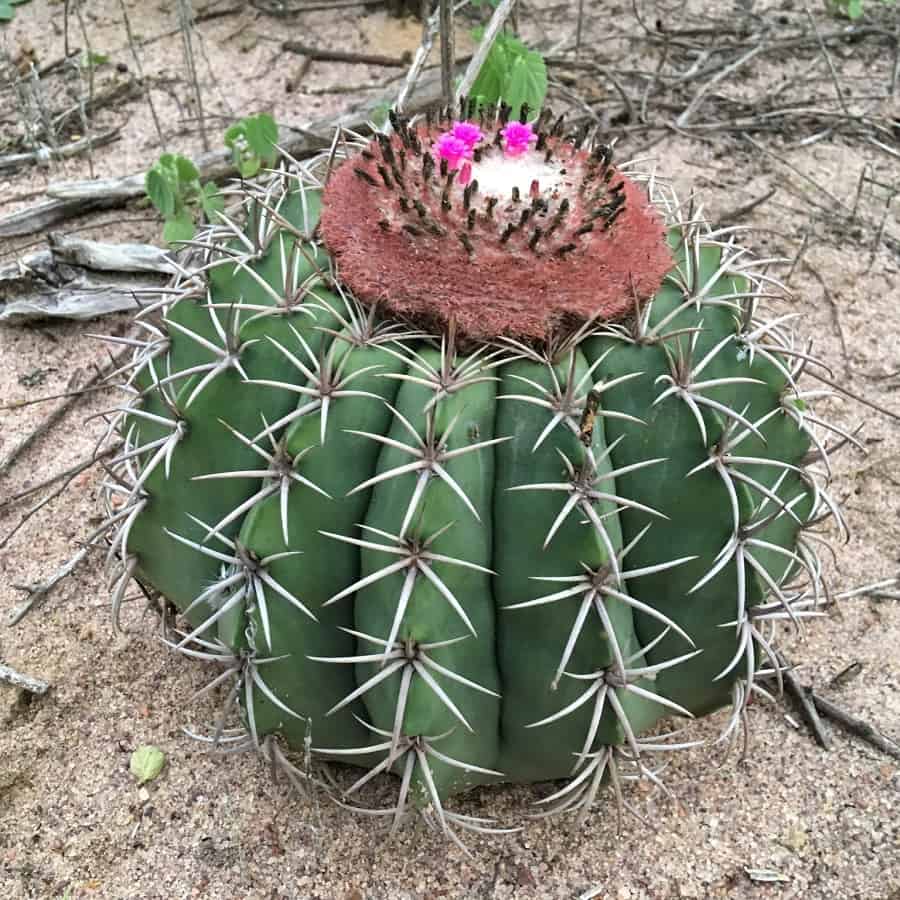
Melocactus zehntneri is a common Melocactus species from Brazil that exhibits great variation. While distinguishing between different localized forms can be challenging, many unnecessary names have been assigned to these variations. The extensive variation in almost all aspects of Melocactus zehntneri has led to taxonomic confusion.
How to Find Melocactus
Melocactus can be found growing naturally in the Caribbean, Mexico, Brazil, and other parts of Central and South America. They thrive in hot and somewhat moist environments.
One of the easiest ways to identify a Melocactus is by its distinct feature—a red and woolen cap-like structure on top of the plant filled with bristles. Flowers can also bloom from these bristles.
Caring for Melocactus
Taking care of a Melocactus involves considering factors such as light, water, temperature, fertilizers, and the container it’s planted in. Let’s explore these aspects further:
How Much Light Does Melocactus Need?
Melocactus requires plenty of direct sunlight to reach its full potential. It’s best to grow this plant outdoors where it can receive at least six hours of sunlight each day. If you choose to grow it indoors in a pot, place it in a spot that receives abundant direct sunlight, like a windowsill or balcony.
Melocactus also thrives in warm temperatures. Ideally, a temperature above 70°F (21°C) creates a suitable environment for your cactus.
How Do You Water Melocactus?
Contrary to many other cacti, Melocactus requires regular watering to grow healthily, likely due to its tropical origins. Water the Melocactus every few days, checking the moisture level of the soil. Avoid letting the soil completely dry out; it should remain slightly moist.
However, be cautious not to overwater the cactus or cause waterlogging, as this can lead to root rot and the eventual death of the plant.
How Do I Repot Melocactus?
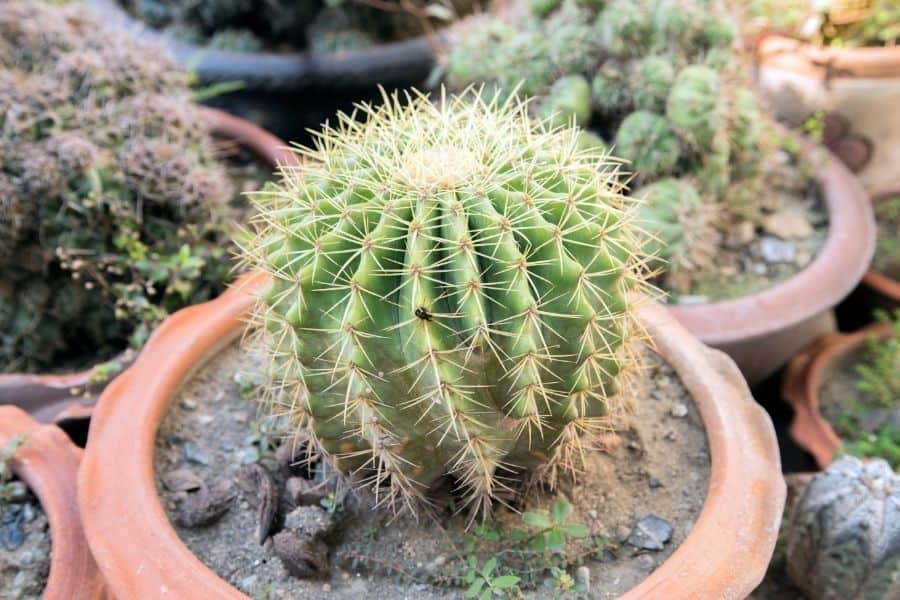
Melocactus prefers growing in compact containers, so when repotting, ensure the soil is packed tightly around the plant. Choose a small pot that provides a snug fit.
During the repotting process (usually before the growing season), carefully remove the plant from the soil, clean the roots, and place it in a new ceramic or clay pot with fresh soil. The pot should have drainage holes or be porous enough for efficient water drainage. Select a pot slightly larger than the previous one while maintaining compactness.
Does Melocactus Need Fertilizer?
Melocactus requires a suitable amount of fertilizer to stay healthy and promote growth. Look for fertilizers specifically formulated for succulents and cacti at stores. Dilute the fertilizer with water to create a balanced mixture for the plant. Applying the fertilizer mix during spring and summer will aid the cactus’s growth. No fertilizer is necessary during winter when the plant is typically dormant.
How to Propagate Melocactus
The most effective way to propagate Melocactus is by using seeds. Follow these steps:
- Fill a pot or container with a well-draining soil mix that includes materials like pumice.
- Sow the seeds in the pot and cover it with plastic.
- Once the seeds germinate into seedlings, gradually expose them to sunlight, starting with shorter durations before increasing.
- Provide regular care by ensuring adequate sunlight and water for the plant.
How Do You Germinate Melocactus Seeds?
To germinate Melocactus seeds, soak them in warm water for a period of time. Then, plant the seeds in the soil mix within the container. Cover the pot to retain heat and humidity needed for seed germination and root formation. Once sprouts appear, remove the cover.
